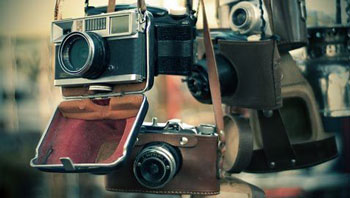Since film, how much has really changed? Well it’s great to show people instantly how they look and to know whether you captured a shot. With film you have to be so technically proficient to nail a shot within a third or half an f-stop. No longer necessary with digital photography. Add the promises of post-processing. Light and exposure are no longer a matter of life and death. Throwing away film negatives was painful. Deleting a file is not. And it’s not 25 cents each time you press the shutter. But convenience comes at a price.

The once generous ratio between picture quality and price dwindled to negligible margins as technology, social media and the Internet in general bombard us with such a staggering amount of visual information that our eyes are often numbed and we’re hardly able anymore to tell good photography apart from less good. But hey, it’s in the spirit of this day and age’s political correctness that everyone should get a chance!
Good photography, however, is the same old hard work as it was in the past. It requires patience, dedication, creativity — and fortes fortuna adiuvat, fortune favors the brave. Whether you’re a more traditional photographer or one who enjoys the latest gear and gadgets, good photography is still the same. It’s documenting the present by producing an artistic interpretation of it.
Thing though is, technology opens new doors and promises shortcuts… There are no shortcuts. But there is a lot of mediocrity that came along with the digital revolution as cameras are all-present and becoming an extension of ourselves.
Still, you can’t just say the difference between a post-processed shot and an unprocessed one is like the difference between frozen pizza and the real thing. It’s this snotty attitude of many versed photographers that makes digital shooters rather rely on auto settings than good old manual fiddling.
But being good at digital photography requires the same skills as film photography. Don’t even bother if you’re not able to work with aperture and shutter speed, or if depth of field sounds like some sort of surface measure and you mess up every moving subject/object.
Software can add zest to an otherwise flat image. But software does replace talent and creativity only marginally. It cannot overcome bad technique. So yes, most of digital photography’s advancements don’t make you a more advanced photographer. They can make photography more fun. But the final outcome counts.
Chances are that the promised land of digital photography yields more careless rather than dedicated photographers as it’s made too easy to just fire away. Digital makes inattentive and negligent. Add the benefit of RAW files, today’s film negatives, making every shot somewhat usable.
Nothing against the democratization of photography, on the contrary, but one has to find a balance. It’s not the end of the world if you detect some traces of noise in an image or if the eyes of the passing girl in that street photography are not 1,000% in focus.
Today we’re much too preoccupied with details that don’t really matter while we happily ignore the burdens that come with digital photography, such as that there’s no photography without a computer. I’d rather also not depend on plugs and wires to charge those drained batteries each day. And who doesn’t want smaller, more sturdy, mostly metal bodies without fragile circuits. And who wants to clean imaging sensors.
Well, pick the best from both worlds. If you absolutely have to and feel more comfortable in the past, then the secondary market is awash with great inexpensive 35mm film cameras. Leica, Holga and the Zeiss Ikon cameras are still in production and available new — and don’t forget Lomography, an offspring of Russian LOMO.
At the end of the day, mix the best of both worlds, a.k.a. master the approach to photography as they did in the past while you enjoy the benefits of modern instant imaging technology.
Just ignore 90% of today’s menu settings. Who cares about dozens filters. All you need is the mastering of aperture, shutter speed, ISO — and a good lens.
That’s why I say stick with a camera you like. Return policies these days are great. We’re tempted to order this and that camera only to spend a few hours with it and return it — at no cost! That’s insane.
It’s great for consumers, but bad for photography because with this attitude we’re never forced to really get to know a camera.
Find the camera that suits you and stick with it for a while. You may then deserve an upgrade.
Sure I am happy for every camera ordered via THEME. The small fee we get is welcomed as a small token of appreciation and I’m really grateful for each and everyone of you who does so.
But I’m much more pleased if this site inspires a bit.


